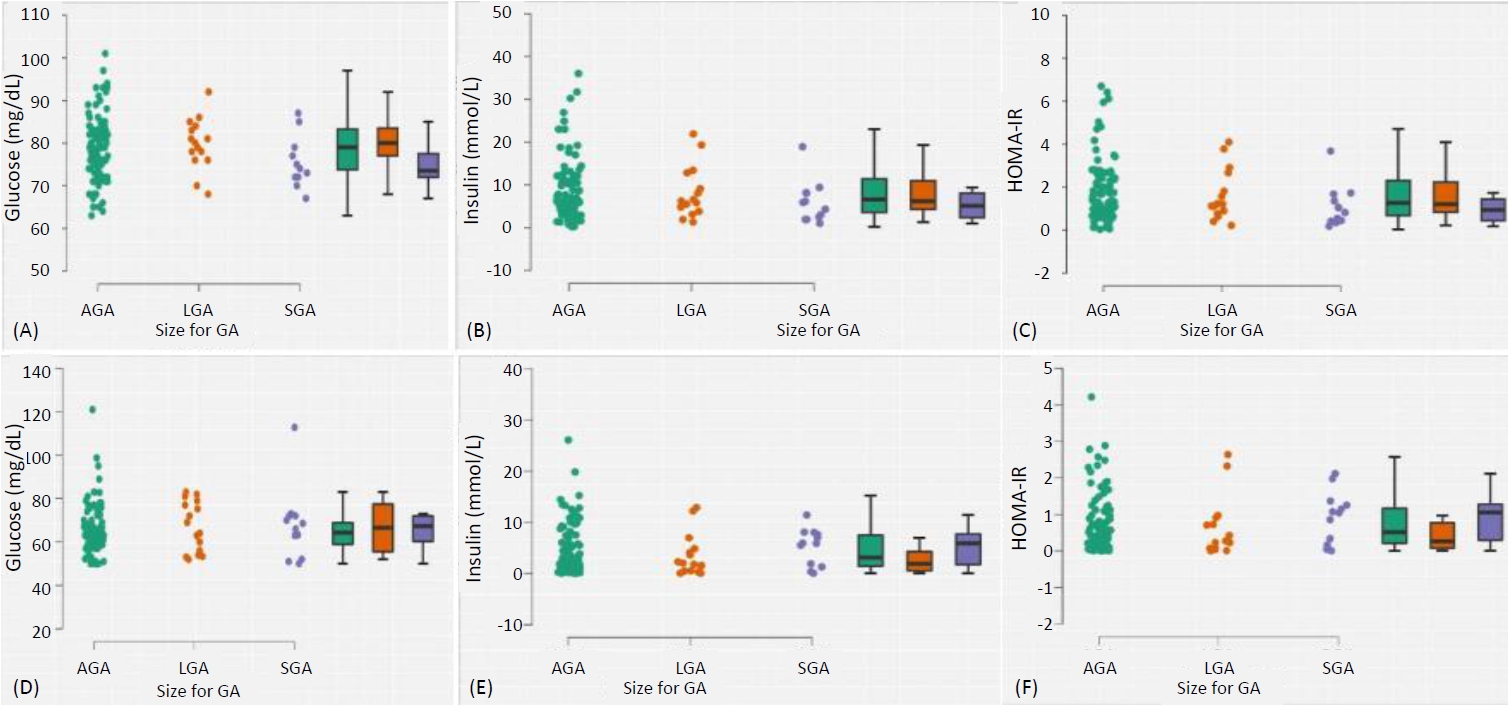4. Schwartz B, Jacobs DR Jr, Moran A, Steinberger J, Hong CP, Sinaiko AR. Measurement of insulin sensitivity in children: comparison between the euglycemic-hyperinsulinemic clamp and surrogate measures. Diabetes Care 2008;31:783–8.

9. Akinola IJ, Oyenusi EE, Odusote OA, Oduwole AO, Njokanma FO. Insulin resistance profile of apparently healthy term neonates in Lagos, Nigeria. J Clin Neonatol 2018;7:71–4.

11. Naseh A, Nourbakhsh S, Tohidi M, Sarkhail P, Najafian B, Azizi F. Associations between anthropometric characteristics and insulin markers in mothers and their neonates and with ne-onate's birth weight: an observational cohort study. Turk J Pediatr 2017;59:625–35.


13. Lurbe E, Ingelfinger J. Developmental and early life origins of cardiometabolic risk factors. Hypertension 2021;77:308–18.


14. Martín-Calvo N, Goni L, Tur JA, Martínez JA. Low birth weight and small for gestational age are associated with complications of childhood and adolescence obesity: systematic re-view and meta-analysis. Obes Rev 2022;23 Suppl 1:e13380.

18. Yamashita H, Yasuhi I, Fukuda M, Kugishima Y, Yamauchi Y, Kuzume A, et al. The associa-tion between maternal insulin resistance in mid-pregnancy and neonatal birthweight in un-complicated pregnancies. Endocr J 2014;61:1019–24.


19. Chionuma JO, Akinola IJ, Dada AO, Ubuane PO, Kuku-Kuye TO, Olalere FD. Profile of insulin resistance of pregnant women at late third trimester in Nigeria: a descriptive cross-sectional report. Niger J Clin Pract 2022;25:1736–44.


21. Diagnostic criteria and classification of hyperglycaemia first detected in pregnancy: a World Health Organization Guideline. Diabetes Res Clin Pract 2014;103:341–63.


24. Villar J, Cheikh Ismail L, Victora CG, Ohuma EO, Bertino E, Altman DG, et al. International standards for newborn weight, length, and head circumference by gestational age and sex: the Newborn Cross-Sectional Study of the INTERGROWTH-21st Project. Lancet Lond Engl 2014;384:857–68.

25. Victora CG, Villar J, Barros FC, Ismail LC, Chumlea C, Papageorghiou AT, et al. Anthropo-metric characterization of impaired fetal growth: risk factors for and prognosis of newborns with stunting or wasting. JAMA Pediatr 2015;169:e151431.


27. Villar J, Giuliani F, Fenton TR, Ohuma EO, Ismail LC, Kennedy SH. INTERGROWTH-21st very preterm size at birth reference charts. Lancet 2016;387:844–5.


30. Maric T, Kanu C, Johnson MR, Savvidou MD. Maternal, neonatal insulin resistance and ne-onatal anthropometrics in pregnancies following bariatric surgery. Metabolism 2019;97:25–31.


31. Bomba-Opon DA, Wielgos M, Horosz E, Bartkowiak R, Szymusik I, Mazanowski N, et al. Maternal plasma cytokines concentrations and insulin resistance in first trimester in relation to fetal growth. Neuro Endocrinol Lett 2009;30:729–32.

32. Wang D, Zhu L, Zhang S, Wu X, Wang X, Lv Q, et al. Predictive macrosomia birthweight thresholds for adverse maternal and neonatal outcomes. J Matern Fetal Neonatal Med 2016;29:3745–50.


34. Simental-Mendía LE, Castañeda-Chacón A, Rodríguez-Morán M, Guerrero-Romero F. Birth-weight, insulin levels, and HOMA-IR in newborns at term. BMC Pediatr 2012;12:94.












